|
Forgotten Temples of Kashmir
Photo series Part-7 An effort to preserve and record Hindu cultural and religios heritage of Kashmir Kotitirtha….Holiest of Holy Shrine 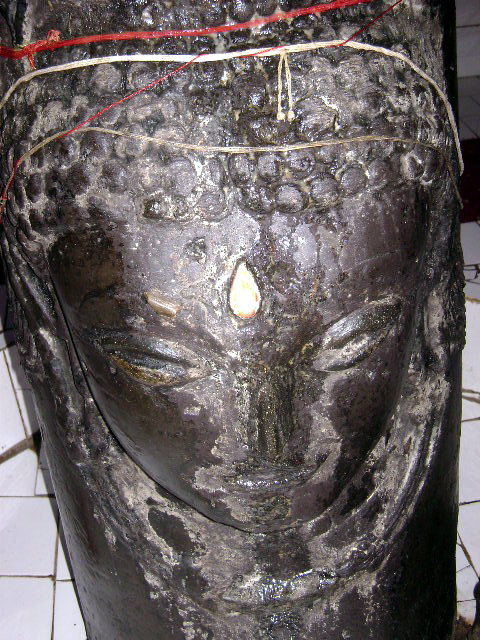 Exclusive images and report from a remote village in Kashmir provided for Shehjarby Chander M. Bhat |
|
Baramulla has its origin to the era of Kashyapa Rishi. The water of Satisar was drainaged from a place through a deep valley between two hills at Sheeri Narvaw resembling the mouth of Varah, The Boar. This Varah Moh changed its identity as Varmul and started to be called as Varamulla. Varamulla is the entrance point to the valley through Muzzafarabad Uri Road and is 55 km away from Srinagar. There is another story as to how Baramulla came to be known as Varahmul. There was a shrine of Lord Vishnu and was called Adi Varaha. The shrine was located on Eastern bank of Vitasta near Kotitirth. The name Varamulla is also probably related to the shrine place of Adi Varah, the Boar. It is held in great esteem since ancient times and has repeatedly mentioned by Kalhan Pandit in Rajtarangni. The temple was vandalized by Afghan ruler Sikander Buthshikan. The ancient Shiv Linga and some stone images in Kotitirth is said to be belonging to the shrine of Adi Varah at the same bank of Vitasta. The town of Baramulla faced the ire of tribal invaders in 1947 and a large scale damage was done to Hindu and Sikh fraternity falling into their hands. Sh. Jawahar Lal Nehru wanted to rename Baramulla as Maqboolabad to commemorate the martyrdom of the nationalist Sherwani. However Baramulla retained its identity. On the left bank, close to Baramulla, is the ancient site of Hushkapur (present Ushkur). Hushka had built a vihara, a stupa and a Vishnu Temple. As per local tradition, Heun Tsang, on arrival in the Valley, stayed here for the first night. Later, he said that some copper plates, on which the proceedings of Kanishka’s council were engraved, lay buried here. The importance of this shrine is described in Kotitirthamahatmya [part of Bhringisha Samhita]. Presently, the shrine is known for the Shiva temple, inside the sanctum sanctorum of which stands a unique five feet Shivlinga with a face. The shrine has a dharamshala and a holy spring. The water of the holy spring is cold in summer and hot in winter. At present dharamshala is occupied by CRPF and its maintenance is being done by them. Right above this temple there is another temple which is called Ganganor. Ganganor is a holy spring at Mohalla Rajghat. A small temple has been built on this sacred spring. It is said that the spring receives water from seven springs existing above at an elevation on the small hillock called Gousain Teng. There are seven springs on Gousain Teng with a temple. Each spring has its name viz. Ram Kund, Sita Kund, Laxhman Kund etc. Simultaneously, water from all the springs with independent out lets combine to form a brook and passing into a phase of journey. It is believed that it belongs to the Lord Rama’s period. There was a number of Kashmiri Pandits living in Baramulla. After invasion of tribal invaders, many Kashmiri Pandits of Baramulla choose to migrate to other parts of the country and many more were killed by tribal invaders. Before migration some 536 Kashmiri Pandit families were living in Baramulla and had their households scattered in Rajghat, Dewan Bagh, Khowja Bagh, Kanlibagh, Jetty Road and Ramghat. After mass exodus only one Kashmiri Pandit namely Sh. Mohan Lal stayed back braving all odds. Some Kashmiri Pandits families from Jammu have returned back and are staying in a temple. They are doing small trades in Baramulla now. Two families staying at Khowja Bagh did not migrate and are still residing there. The shrine topography described above remains incomplete without getting mention of Ram Mandir of Ramghat. A Janki was always taken from this temple on occasions of Ram Navmi and Dussehra. Another temple near Kotitirth is the temple of Bhairav known as Bhairav sund [Bharaiv Bagh]. Shushnoor was offered on dates of festivals specializing the occasions in the honour of the deity. Near Kotitirth there was a ghat on river Vitasta called Kotighat. This place was used for the purpose of 10th day Kriya of the departed souls. The ashes of the dead were immersed in Vitasta at Kotighat. Adjacent to Kotighat is cremation ground comprising of five kanals of land. All these things are there but the people whose presence once thrived on the face of Varamul are now few and far between. References Place Names in Kashmir by B.K.Raina and S.L.Sadhu published by Bharatiya Vidya Bhavan, Mumbai and Indira Gandhi National Centre for the Arts, New Delhi |
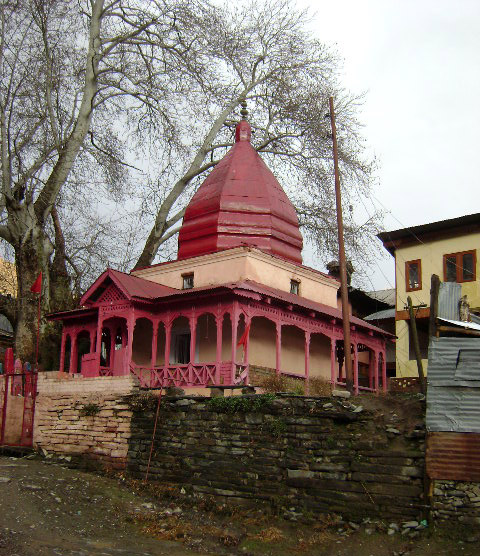 Main temple a Kotitirth |
|
Icons outside Kotitirth Shrine. Colors have not changed the concept of these icons |
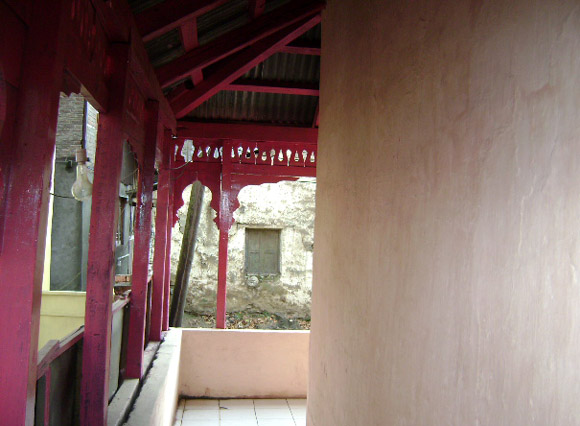 a Parkama of the temple. Path of salvation |
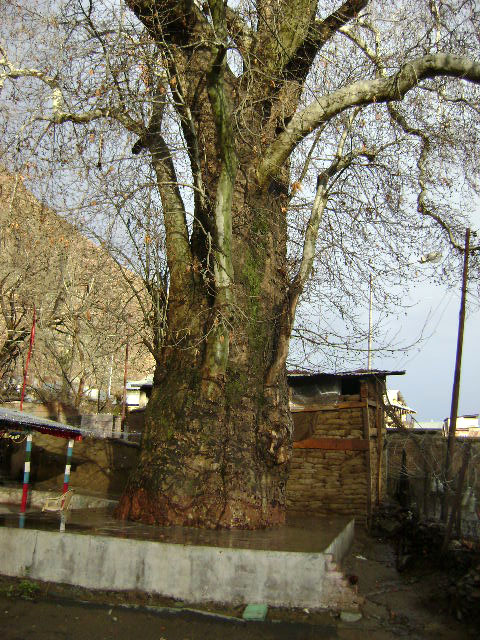 Chinar near the temple shading the faith of the devotees |
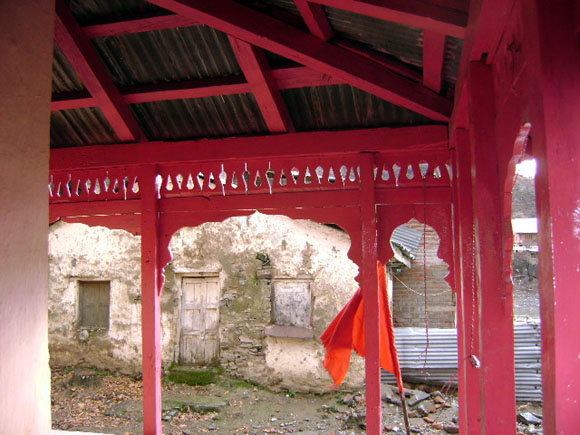 Dharamshala in Kotitirtha. Ruins and remains of the resting place of devotees |
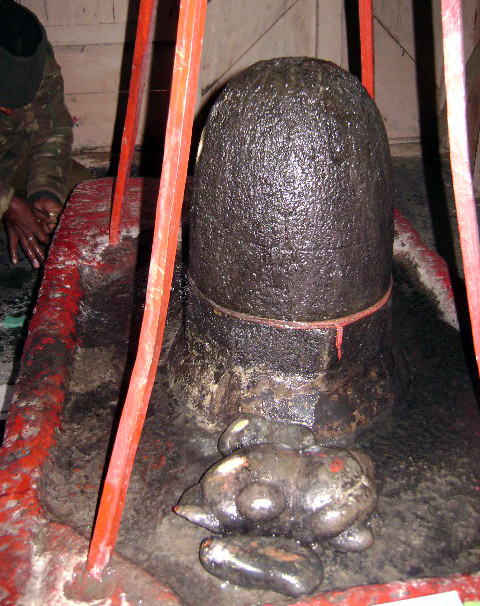 a Shiv Lingam inside small Shiv Mandir near Kotitirth |
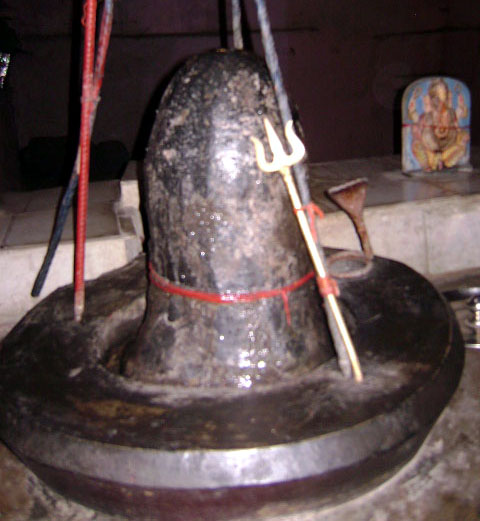 Shiv Lingam at Bairav Bagh teaching meditation to devotees. |
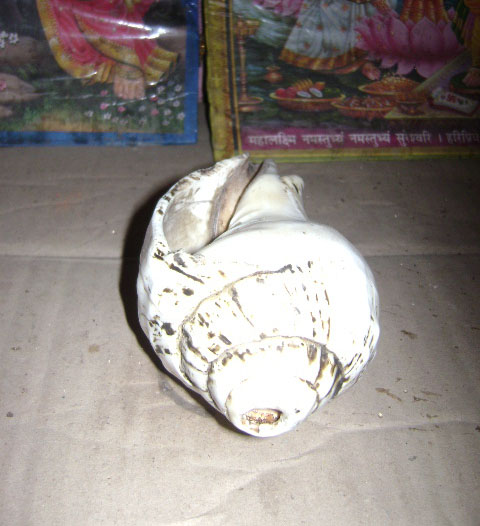 Shankh [Conch Shell] inside the temple waiting for blower since last 21 years |
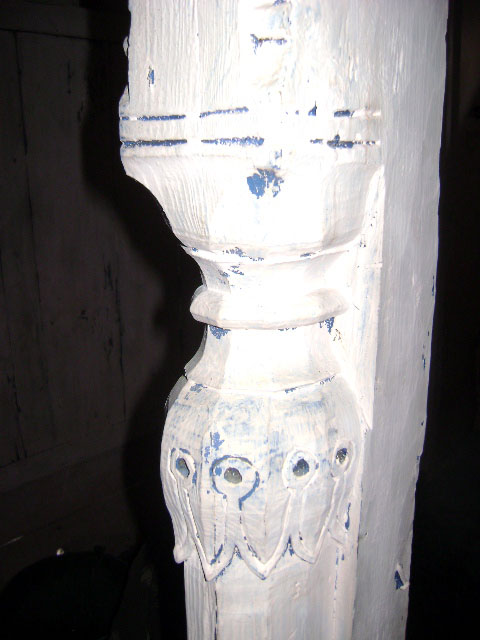 Wooden Pillar inside the temple. How long will it bear the weight of the faith without the strength of devotees? |
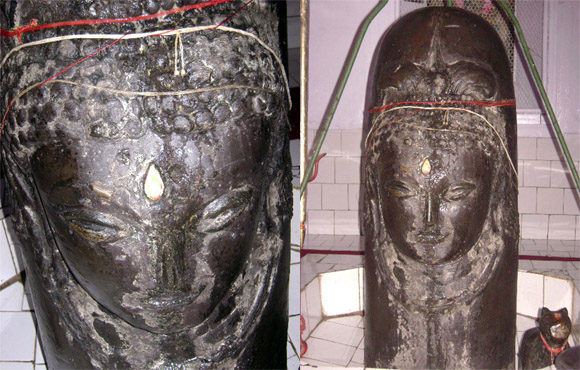 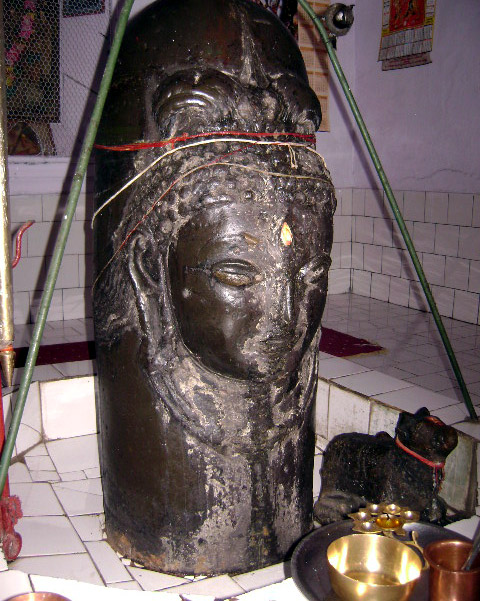 Unique Shiv Linga inside the main temple..JPG |
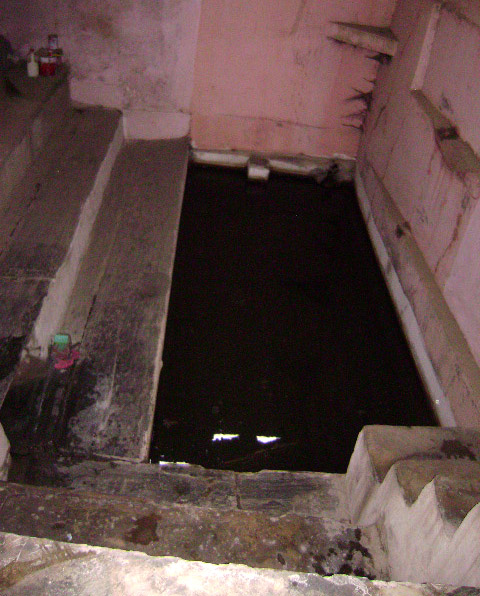 Holy spring inside the temple known as Ganga Noor. Sacred waters of Ganga giving darshan over here |
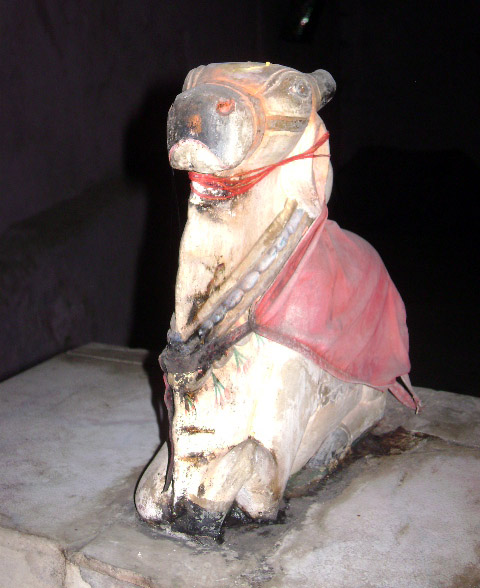 Brashib guarding the temple saying Koti Koti Pranam to the founder of the Universe |
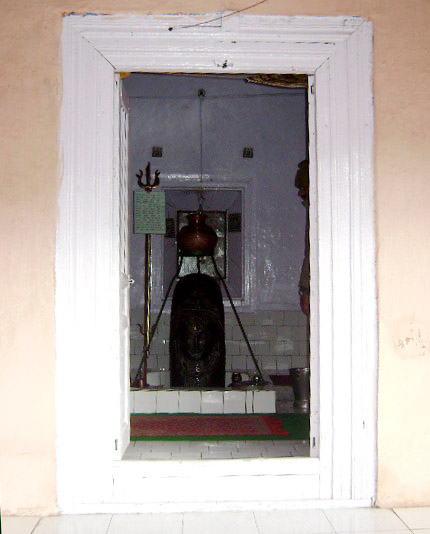 Main entrance of the temple. Door to the Nirvana |
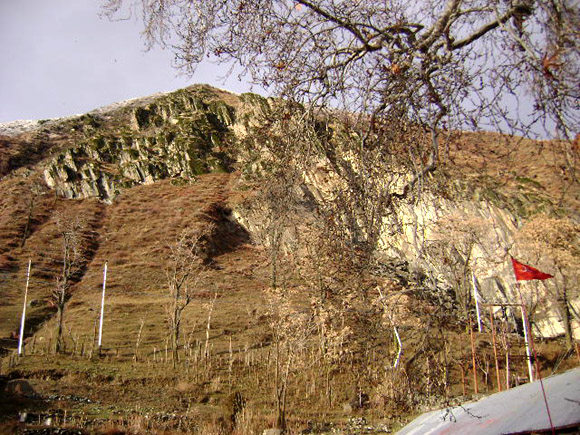 Goosain Teng. Tower of faith |
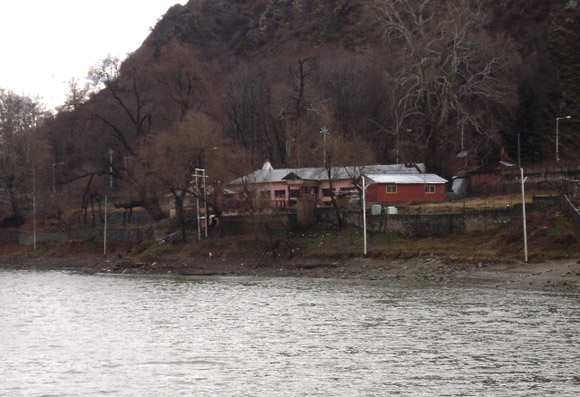 Shail Putri temple just opposite Kotitirth trans Vitasta |
|
|
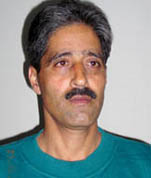 *Born
on 20th March, 1960 in Murran a village in North Kashmir, Chander M.
Bhat is presently working as an Assistant Supdt. Posts, in Department of
Posts, Govt. of India. His articles regarding Posts and of
non-political nature stand widely published in various papers and
magazines of the country. A booklet 'How to Collect Stamps" published by
the Department of Posts, has earned him genuine accolades. He worked on
the project of tracing the roots of his co-villagers and of the village
Murran, resulting into the culmination of a widely acclaimed book
"Murran -My Village". Man with depth, Chander M. Bhat has also another
book, "Ocean by Drops" (collection of poems) in his vase having colorful
poems. His book "Ancient History of Jammu and Kashmir", confirms his
researching capability. Various research papers like "The Splendor that
is Amarnath" and "Vitasta" The Sacred River of Kashmir" are valuable
additions to his works that has proved very fruitful and guiding force
in the exile period of Kashmiri Pandits community of which the author is
also a member.
Presently
the author is working on "OOL - THE NEST" a six volume project on all
the 595 (each volume of about 2500 pages)Kashmiri Pandit villages of
Kashmir. *Born
on 20th March, 1960 in Murran a village in North Kashmir, Chander M.
Bhat is presently working as an Assistant Supdt. Posts, in Department of
Posts, Govt. of India. His articles regarding Posts and of
non-political nature stand widely published in various papers and
magazines of the country. A booklet 'How to Collect Stamps" published by
the Department of Posts, has earned him genuine accolades. He worked on
the project of tracing the roots of his co-villagers and of the village
Murran, resulting into the culmination of a widely acclaimed book
"Murran -My Village". Man with depth, Chander M. Bhat has also another
book, "Ocean by Drops" (collection of poems) in his vase having colorful
poems. His book "Ancient History of Jammu and Kashmir", confirms his
researching capability. Various research papers like "The Splendor that
is Amarnath" and "Vitasta" The Sacred River of Kashmir" are valuable
additions to his works that has proved very fruitful and guiding force
in the exile period of Kashmiri Pandits community of which the author is
also a member.
Presently
the author is working on "OOL - THE NEST" a six volume project on all
the 595 (each volume of about 2500 pages)Kashmiri Pandit villages of
Kashmir. |
|
|
| Copyrights © 2007 Shehjar online and KashmirGroup.com
. Any content, including but not limited to text, software, music,
sound, photographs, video, graphics or other material contained may not
be modified, copied, reproduced, republished, uploaded, posted, or
distributed in any form or context without written permission. Terms & Conditions. The views expressed are solely the author's and not necessarily the views of Shehjar or its owners. Content and posts from such authors are provided "AS IS", with no warranties, and confer no rights. The material and information provided iare for general information only and should not, in any respect, be relied on as professional advice. Neither Shehjar.kashmirgroup.com nor kashmirgroup.com represent or endorse the accuracy or reliability of any advice, opinion, statement, or other information displayed, uploaded, or distributed through the Service by any user, information provider or any other person or entity. You acknowledge that any reliance upon any such opinion, advice, statement, memorandum, or information shall be at your sole risk. |
Monday, April 20, 2020
Kotitirtha….Holiest of Holy Shrine
Subscribe to:
Post Comments (Atom)
No comments:
Post a Comment